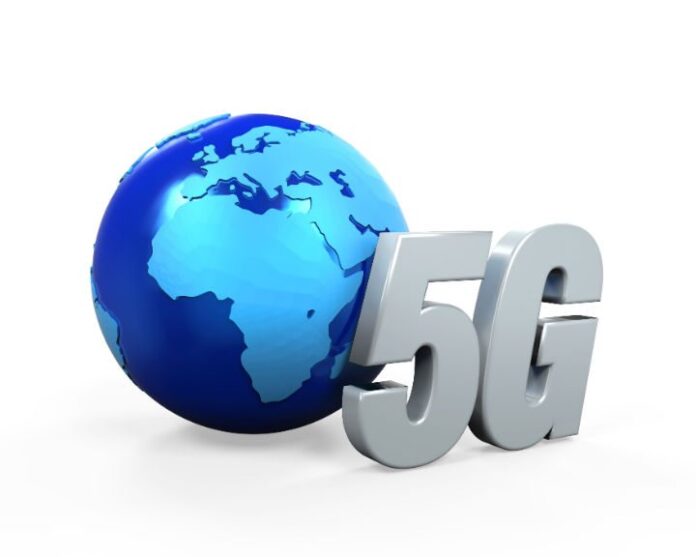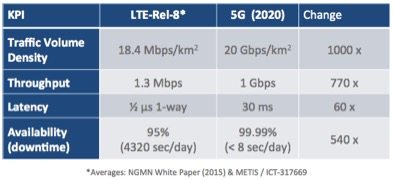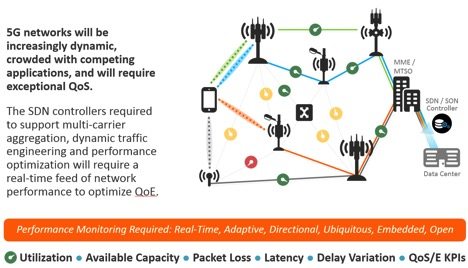Current state of 5G trends
What is “5G?” Many organizations and entities with a stake in the outcome are attempting to answer that question. A useful example is the push by the GSMA for international, industrywide agreement on a 5G definition and a set of design/technology standards.
At this early stage, contributions from the GSMA have focused on attempting to predict what consumers and business customers will pay for perhaps dozens of years in the future. From this process has emerged a variety of possible “use cases” and “business models” for 5G, extending to the logical subset of technologies that will be needed to deliver those services.
GSMA summarized its ideas in the December 2014 white paper, “Understanding 5G: Perspectives on future technology advancements in mobile,” which defined 5G by focusing on applications that cannot be addressed by today’s networks. Namely, technology and services delivering sub-1 millisecond, end-to-end round-trip latency and greater than 1 gigabit per second or better downlink bandwidth.
Use cases and business models
GSMA insists that as of now there are really only four plausible (read: commercially viable) 5G applications not achievable with LTE, LTE-Advanced and other 4G improvements:
• Augmented reality
• Virtual reality
• Tactile Internet
• Autonomous driving
Grouped together, the first three could involve purposes both fun – gaming – and practical – manufacturing or medicine. VR/AR systems are in their infancy, and their success will be dependent not only on high-bandwidth/low-latency networks beyond what LTE-A can deliver, but also other in-development technologies like motion sensors and head-up display.
Self-driving cars, while potentially transformative, won’t necessarily require the next-generation network capabilities GSMA proposes. Would they really need to communicate with each other with near-zero delay to avoid collisions, for example? Google’s self-driving cars make decisions largely based on static maps and sensors. Critical mass adoption is another hurdle; likely, regulatory/government intervention would be necessary to jump-start the transformation.
In theory, 5G networks could be designed and built from the ground up to address challenges operators now face. But history and economics show that operators prefer to migrate toward higher performance, 3G to LTE, not directly to LTE-A, for example, so as not to raise the bar too quickly since consumers have shown little interest in paying significant premiums for huge steps in speed. Gigabit broadband is a good example.
Mobile network operators will continue to upgrade their networks – usage trends demand it – but it’s more likely to be a gradual shift than one centered on virtual reality as a primary use case. How much do we really want to see and pay more for? Mom in 3D, in her pajamas?
Technology and business challenges
How will the success of 5G be measured? And what technologies, business practices and regulatory changes are needed so 5G lives up to those expectations?
Let’s return for a minute to some of the key performance indicators that are likely to be the yardstick for measuring 5G services. Each of these goals is two to three orders of magnitude more in terms of performance than what we have today:
Network performance metrics and stated goals for 5G
The trick is, there are limits to physics and economics.
Let’s assume for a minute that the investment is deemed worthwhile. To get there, 5G would likely require, among other things: multicarrier aggregation, distributed network function virtualization and virtualized instrumentation.
Multicarrier aggregation
Using multiple frequencies together to increase bandwidth to the user equipment is necessary to overcome the capacity of existing spectrum definitions. Combining data from multiple bearers, which may come from multiple towers, requires reassembly of data into the original sequence. Any technology that can do this requires buffering, and dedicated ASICs (in the handset, presumably) – adding cost and latency that can’t be accommodated.
Achieving 1 ms latency
Considering that 5G discussions are quoting round-trip latency, 500 nanoseconds of one-way delay is the goal. Driving down latency means:
1. Minimizing the physical path length of the “call” or session. Light travels about 150 kilometers in a millisecond over air, and 100 km in a fiber. This implies moving related network functions to major cell sites instead of centralizing them. In theory, this is possible with distributed NFV. But currently, few cell sites have X86 servers, or the power required to maintain a stack of them.
2. Reducing packet processing hops and delay. Today, latencies as high as 300 ms across a metro area backhaul are not usual, meaning operators will have to reduce real-world delay by two orders of magnitude – 100 times less delay.
Preparing for 5G
Practically speaking, operators will need to increase capacity and reduce latency, incrementally as applications and user demand requires it. Approaching 5G requirements with LTE-A networks will present similar challenges. To make 5G a reality, operators need to do the following to prepare for this upcoming shift:
Gain granular backhaul and mobile network visibility. Real-time performance monitoring with microsecond-precise latency measurements, bandwidth utilization, availability and multilayer metrics is critical to understanding network “pinch points” in both bandwidth and latency, to trend network performance and to quantify improvements introduced by optimization or net infrastructure.
Distributed test traffic generation. Turn-up testing and non-intrusive capacity testing that simulates network or per-service traffic allows operators to assess whether key technologies – like voice over LTE – will work on their networks before they deploy them. The same methods can be used to assess network readiness for the strict timing, loss, latency and availability expectations for 5G.
Virtualized instrumentation combining centralized, NFV-based test control and session setup with miniature hardware modules, such as programmable “smart” SFPs; address requirements for accuracy, ubiquity, with sufficiently lower cost than standalone instrumentation; and full-mesh quality-of-service visibility. Mobile network operators are starting to deploy this instrumentation now. National operators in Japan and South Korea already monitor hundreds-of-thousands of towers.
These “performance leaders” will have the advantage of trending their networks, finding the optimal areas to upgrade and having a real-time “network state” feed to allow self-optimizing networks and software-defined networking controllers to optimize quality of experience by dynamically pathing traffic and maximizing the use of their backhaul and radio infrastructure.
As their automation and performance assurance initiatives evolve, operators may find that LTE-A, mixed with SDN and clever NFV deployment can reach many of the goals 5G proponents aspire to. If so, what is 5G, other than a need for speed we’ve been addicted to since the smartphone started shipping?
Editor’s Note: In an attempt to broaden our interaction with our readers we have created this Reader Forum for those with something meaningful to say to the wireless industry. We want to keep this as open as possible, but we maintain some editorial control to keep it free of commercials or attacks. Please send along submissions for this section to our editors at: dmeyer@rcrwireless.com.




